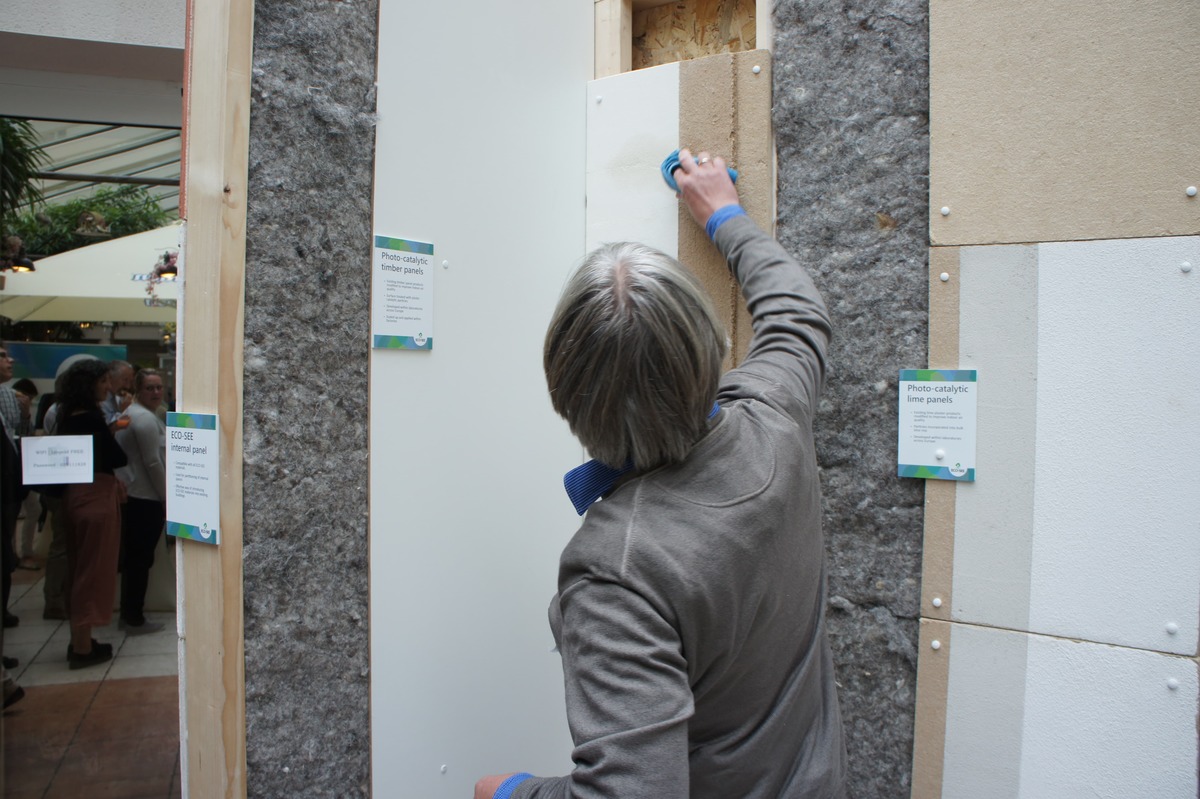Healthy and energy efficient buildings: the potential of ECO-SEE materials

With energy efficiency in buildings high up on the European political agenda, Brussels is certainly the place where awareness about the importance of energy performant buildings is prominent. But less people might be aware of how much indoor air quality needs to be improved. Indoor air is 2 to 5 times more polluted than outdoors, because of mould and bacteria resulting from excessive levels of humidity, and pollutants such as volatile organic compounds (VOCs) released by furniture, cleaning products and textiles.
Eco-materials for buildings, an untapped solution
Building with natural eco-materials such as clay, sheep’s wool, hemp and timber can provide a solution. Their potential to improve the quality of the air in our buildings, while also enhancing energy performance, is as high as it is untapped. In addition, they have a clear added-value as ‘passive’ techniques, which do not need any additional energy to improve the indoor environment, thus eliminating the complexity and maintenance cost of alternative ventilation systems.
Although ancient buildings with clay or lime can be visited all over the world, in today’s construction industry, eco-materials are relatively niche and have to compete with mass-produced concrete, steel and plastics.
In recognition of this problem the European Commission has supported a series of research projects developing eco-materials for improved indoor environmental quality.
ECO-SEE improved eco-materials
The EU-funded ECO-SEE project has developed hygrothermal coatings that regulate relative humidity levels and temperature, modified bio-based insulation materials to capture VOCs, and developed photocatalytic coatings to remove indoor pollutants using visible light sources. Moreover, as these materials are natural, the embodied energy to produce them is very low and at end-of-life they can safely be disposed of or - more often - recycled.
The results of the project have been shown in a final workshop in Brussels on 29th June 2017 to a wide range of experts. The partners developed a ‘multifunctional’ wall panel, which integrates several of the eco-materials enhanced during the project, to show the potential of these materials when combined together. The panel was on show during the event, having recently completed long term testing at demonstration sites in the UK and Spain.
Concrete results from ECO-SEE
The eco-materials developed by ECO-SEE have shown remarkable figures:
- 60% improvement in thermal resistance and 80% improvement in moisture buffering performance of clay plasters;
- 180-720% improvement in VOC capture potential of sheep’s wool insulation;
- Up to 50% improvement in energy performance of ECO-SEE wall compared to reference panel using standard insulation and finishing materials.
Most of these materials will eventually make it to the market, as project partners are already discussing commercialisation.
ECO-SEE materials are therefore passive solutions that have low embodied energy, can be recycled, reduce indoor pollutants and noise, while improving the energy performance of buildings. As we spend on average 90% of our time indoor, these are options that should not be overlooked!
Read more about the final project workshop "90% Indoor: solutions for healthy and energy efficient buildings"



